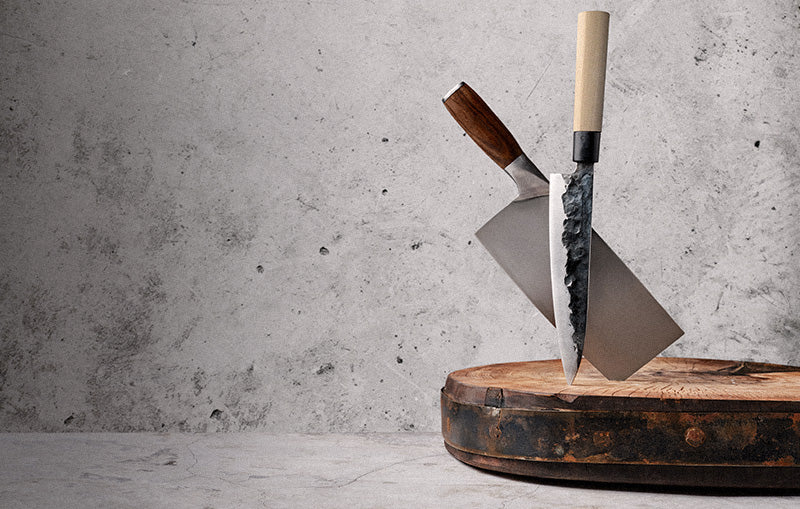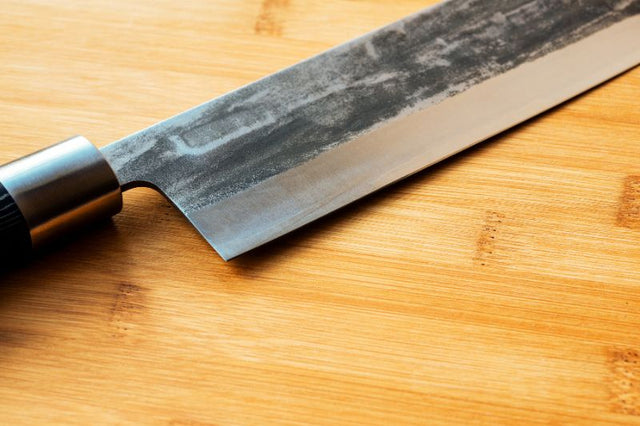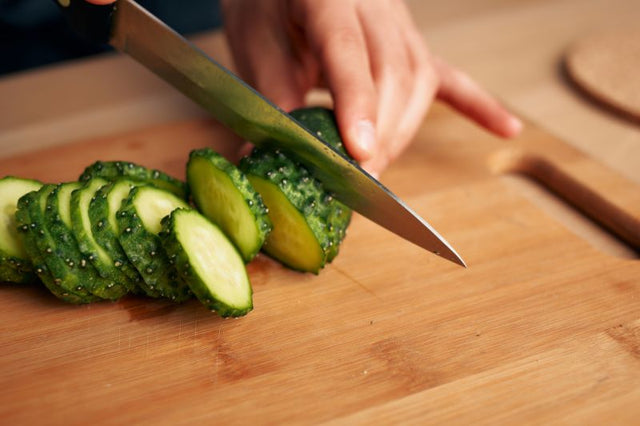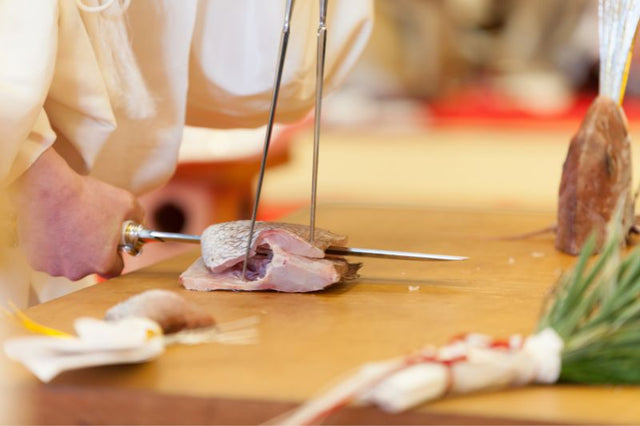Are all Asian-made knives the same? For example, Japanese knives enjoy a reputation for being excellently crafted; can the same be said for Chinese knives? Is China also known for being a good source of kitchen blades?
Yangjiang Knives
If there's anything to be manufactured, you can be certain they're making it in China. This is definitely true for knives. In fact, there's one city that is pretty much devoted to their production. Yangjiang, in the southern province of Guangdong, is known as the country's knife and scissors capital.
The city has been associated with the bladesmith craft for a long time. However, if you have misgivings, considering the reputation that "Made in China" has garnered in recent decades, understand that Yangjiang boasts a knife-making history that dates back to 600 AD. That's more than 1,400 years of mastery.
Other places in China also manufacture knives, but more than 70 percent of Chinese-made knives come from Yangjiang. Nonetheless, only five percent of the companies there manufacture knives under their own brand, 70 percent are involved in OEM (original equipment manufacturing), and the remaining 25 percent, in ODM (original design manufacturing).
To differentiate, the manufacturer sells OEM products based on the specifications of the buyers, while OED means that the manufacturer makes pre-designed products to be sold under the purchasing company's brand.
The city makes over 4,000 kinds of knives, scissors, and other cutting implements. These include kitchen and pocket knives, hardware cosmetics tools, etc. Making as many knives as the city does, not all of its products stay within China. In fact, 85 percent are exported to more than 100 countries worldwide.
Yangjiang is undoubtedly internationally renowned for its knives, so much so that it even holds an annual international knives and scissors fair. Japan, which itself is known to produce exemplary knives both in the traditional and Western styles, has always been represented in the fair by some of its artisans.
Asian Knives, Collectively
When researching which kitchen knives to get, the competition raised is often between European/American knives and Asian knives, which typically refer to Japanese knives. Nonetheless, these do share many similarities with Chinese knives.
The main differences between European and Asia knives lie in the steel used to make the blade and in the blade edge angle. European knives have blades of softer steel. As a result, they're more durable, bouncing back from hard contact, whereas the harder Asian steel is more brittle and prone to chipping or breaking.
It may be longer-lasting, but softer steel doesn't retain sharpness for very long, thus requiring frequent honing. On the other hand, the more rigid steel can stay very sharp for a long time. When used for their intended purpose, hard-steel knives can last a long time too, and they won't require regular sharpening either.
Since European blades are softer, they are also made to be thicker and, thus, heavier. Asian knives, on the other hand, are thinner and lighter, which means they are not as tiring to use.
Blades-wise, European knives are more angled upward than Asian knives, which are designed to have more contact with the cutting board. More contact allows faster and more efficient cutting.
Japanese Knives
Like the Chinese, the Japanese have a long history of knife craftsmanship. They have been making their own kitchen knives since the 16th century. Still, the Japanese art and trade of knife-making actually go all the way back to the Heian period (794-1185) when the Hocho-Shiki knife ceremony was recorded to have taken place. This involved the presentation of fish and meat dishes to the emperor at that time.
Later on, through the inevitable spread of cultures, Japan also started creating knives that could cater to the demands of other types of cooking. And as the Japanese do, they found ways to make these borrowed items their own, improving them to work with traditional Japanese dishes as well.
Differences between Japanese and Chinese Knives
Although they may be lumped together and distinguished collectively as Asian, there are notable differences between them. For instance, let's look at the contrasting traits of a Chinese Cai Dao (vegetable cleaver) and a Japanese Nakiri (vegetable knife).

Chinese Cai Dao (Vegetable Cleaver)

Japanese Nakiri (Vegetable Knife)
These two knives look very similar at first glance, but those in the know can easily tell them apart just from their height and weight. Nakiri knives are a bit lighter with shorter blades than Chinese cleavers. Both would work well as an alternative to a proper chef's knife but note that a Chinese vegetable cleaver is better at giving denser cuts, while the Nakiri knife can slice the daintiest pieces and carve the most intricate designs.
When it comes to shape, both have a blunt tip, although the Nakiri also features a little curve towards the end of the blade.
These are the main distinctions between these two specific kinds of knives. However, Chinese cleavers come in three kinds: the Cai Dao, the meat cleaver, and the all-purpose cleaver. The heaviest is the meat cleaver, and the lightest, the vegetable cleaver. For comparison, we can also pit the all-purpose Chinese Cleaver with the Japanese Chef's Knife (Gyuto).
Both knives were designed to be versatile, but they look nothing alike. The Chinese Cleaver has enjoyed increasing in popularity in recent years, thanks to certain social media influencers who use it to prepare traditional Chinese dishes. Viewers see how deftly they wield it to do anything from slicing, chopping, and mincing to crushing and transferring cut pieces. So naturally, they end up wanting to get one for themselves.
Meanwhile, the Chef's Knife is understandably the knife that chefs worldwide invest in, always ensuring they have it in their kitchen. That's why you'll see Top Chef contestants unpacking or packing them as they arrive or get eliminated. After all, a chef is no good without a proper set of kitchen knives, the most important of which is the Chef's Knife. This is also an all-purpose knife now used for mincing, dicing, and slicing but was initially intended for disjointing and slicing large chunks of meat.
The Japanese version of the Chef's Knife is the Gyuto, and it's different from the Chinese Cleaver in its shape, blade, and versatility. The Chinese Cleaver has a broad, rectangular, and heavier blade, while the Gyuto has a more tapered and thinner blade.

All-Purpose Chinese Cleaver

Gyuto (Japanese Chef’s Knife)
The Gyuto's tapered blade design makes it ideal for performing a variety of tasks, including slicing, dicing, mincing, disjointing, peeling, cleaving meat from the bone, and cutting through hard ingredients. It's also more appealing to those with smaller hands since it's light and much easier to manipulate.
Meanwhile, the Chinese Cleaver is a knife that can definitely handle tougher ingredients. It's essentially a force multiplier. That's why the ideal cutting technique when using it is the push cut or horizontal chop.
Japanese-made Knives vs. Yangjiang-made Knives
Yangjiang has an entire knife-making industry, and the city produces all kinds of knives, including Western-style knives and Japanese knives. At the same time, Japan is also making its own version of trusted and worthwhile knives from different countries. For instance, there is now the Chuka Bocho, the Japanese rendition of the Chinese Cleaver. The name literally translates to "Chinese kitchen knife."
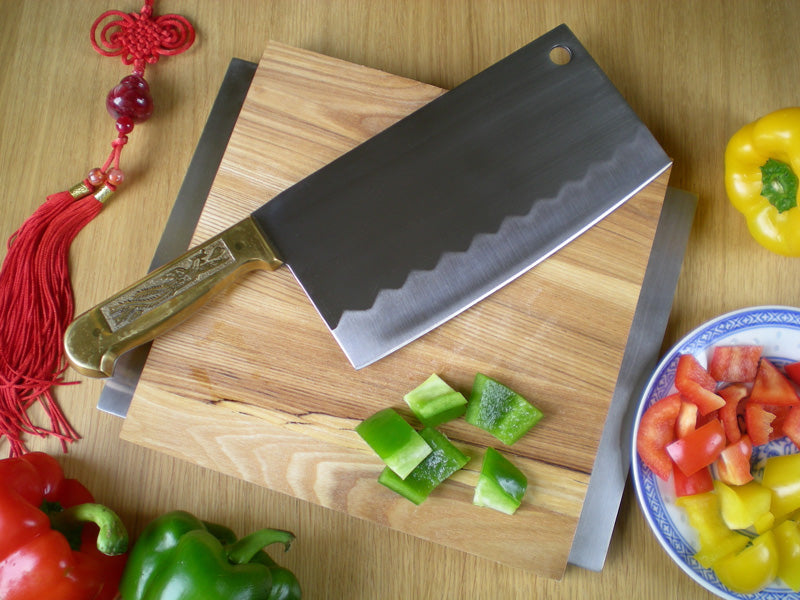
Chuka Bocho
Generally, what buyers are most concerned about is quality. Considering that Japanese and Chinese knives share many similarities in contrast with their Western counterparts, it would really have to boil down to quality.
Japanese knives can always be expected to be excellently made, more often than not hand-crafted by master bladesmiths. However, while Chinese Yangjiang knives can also be high quality, especially the ones from established and reputable brands, the high competition among themselves sometimes has some companies choosing to go with inferior materials and sacrifice some quality to make way for a higher profit margin.
For quality control, Yangjiang does have the Knives and Scissors of Standardization of Guangdong Province, which falls under the Guangdong Provincial Bureau of Quality and Technical Supervision. Nationally, there is the National Knives, Scissors, and Commodity Metal Tools Quality Supervision and Inspection Center. There are also industry associations that help establish standards, so those looking to invest in Yangjiang Chinese knives may want to look for approval or membership from these agencies.
Conclusion
Whether you end up going with a Chef's Knife that's made in China or a Chinese Cleaver made in Japan, the kind of knife you're getting is the first choice you have to make, and this would be mainly based on the different functions you require of the knife and the level of ease your hand has in handling it.
The next choice, of course, is where to source it. Japanese knives guarantee good quality. While Yangjiang knives are known to be industry leaders too, you should make sure that you get your knives from a reputable brand. This means that some more involved due diligence is required on the buyer's part.
Get Free Bonus Books

Sign up for free to the Japanese Knife Club to get advice and exclusive articles about how to choose Japanese Knives, and tips and tricks for using Japanese knives.
About the author
Kei Nishida
Author, CEO Dream of Japan
Certification: PMP, BS in Computer Science
Education: Western Washington University
Kei Nishida is a passionate advocate of Japanese craftsmanship, a writer, and the founder and CEO of Japanese Knife Co., Japanese Green Tea Co., and Japanese Coffee Co., all part of Dream of Japan.
His journey began with a mission to introduce the world to the exquisite flavors of Japanese green tea. Through Japanese Green Tea Co., he pioneered the import of premium tea grown in nutrient-rich sugarcane soil, earning multiple Global Tea Champion awards. He then expanded into the world of coffee, launching Japanese Coffee Co., the first company to bring Sumiyaki charcoal-roasted coffee to a global audience.
With a deep appreciation for Japanese artistry and tradition, Kei turned his attention to one of Japan’s most revered crafts: bladesmithing. Through Japanese Knife Co., he made handcrafted katana-style knives, created by a renowned katana maker, available outside Japan for the first time. These exceptional knives embody centuries of samurai sword-making expertise, blending tradition with modern functionality for chefs and collectors alike.
Kei’s journey continues as he uncovers and shares Japan’s hidden treasures—one sip, one blade, and one legacy at a time.

